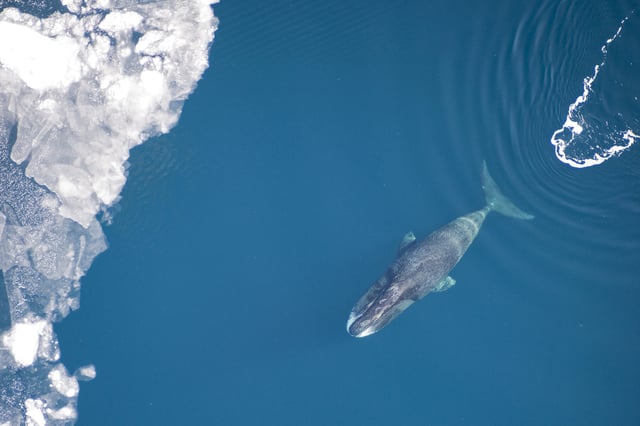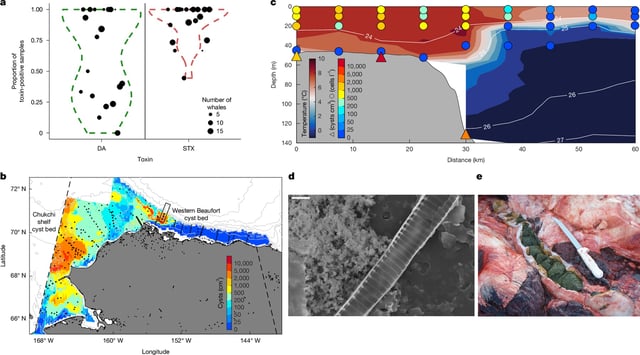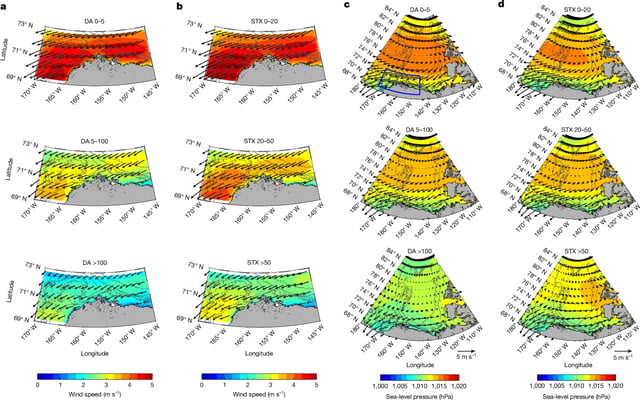Overview
- Researchers analyzed faecal samples from 205 bowhead whales collected between 2006 and 2025 and found that algal toxin concentrations rose in step with ocean warming and reduced sea ice extent.
- The study detects two potent neurotoxins—saxitoxin produced by Alexandrium and domoic acid from Pseudo-nitzschia—at higher concentrations in the Arctic food web.
- Longstanding partnerships with Arctic tribal communities supplied whale scat from subsistence hunts and strandings, overcoming logistical barriers in the region.
- Remote Arctic regions lack routine toxin testing infrastructure, complicating efforts to protect marine wildlife and communities that rely on subsistence fisheries.
- Elevated toxin levels have already been associated with walrus and other marine mammal strandings, raising concerns for indigenous food security and ecosystem health.



